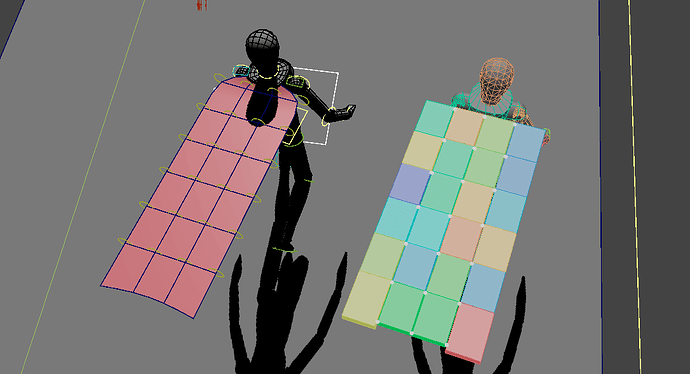Putting together some material for this now. Here’s a first draft.
Scene File
- cloth_example_v002.ma (964.6 KB)
In this example, I’m assigning Markers to each control with a Shape Type = Box. Aside from the obvious intersections - which could be addressed by increasing the depth of the box shape - it works quite well. However there are a few issues.
Pivots
The rotation pivot of each Marker will be at the rotation pivot of the control. Normally, this is what you want. For example, you’d expect your lower arm control to rotate around the elbow. But in this case that isn’t what we want.
Notice how the the pivot of the control in this case is located at the edge of the cloth. At the vertex. What we really want is a Marker for every face of this cape. And see how we’ve got 4 rows of Markers, but only 3 rows of faces.
The result is boxes rotating around their center rather than at the vertices like we’d expect.
Flex
Another thing I think looks a little off is how stiff our cloth is. Like he’s wearing a carpet. This can be controlled via both Pose Stiffness but also Translate Stiffness, if we let our transforms be Soft.
- Translate Stiffness will make your cloth more or less stretchy
- Pose Stiffness (or Rotate Stiffness) will make your cloth more or less bendy
Returning with an alternative method that solves some of these issues shortly.
